Although we can never truly grasp the horrors of the First World War, we can attempt to understand through education and remembrance. While you can learn the facts from books and films, visiting the battlefields, can perhaps provide you with a sense of place and atmosphere.
The location of the 1914-18 battlefields of the Western Front
Some of the most intense and strategically important fighting occurred on the 'Western Front' where armies found themselves in a stalemate, dug into miles of trenches in a four-year battle for the upper hand. The miles of opposing armies along the Western Front stretched through northern France and Belgium for 440 miles.
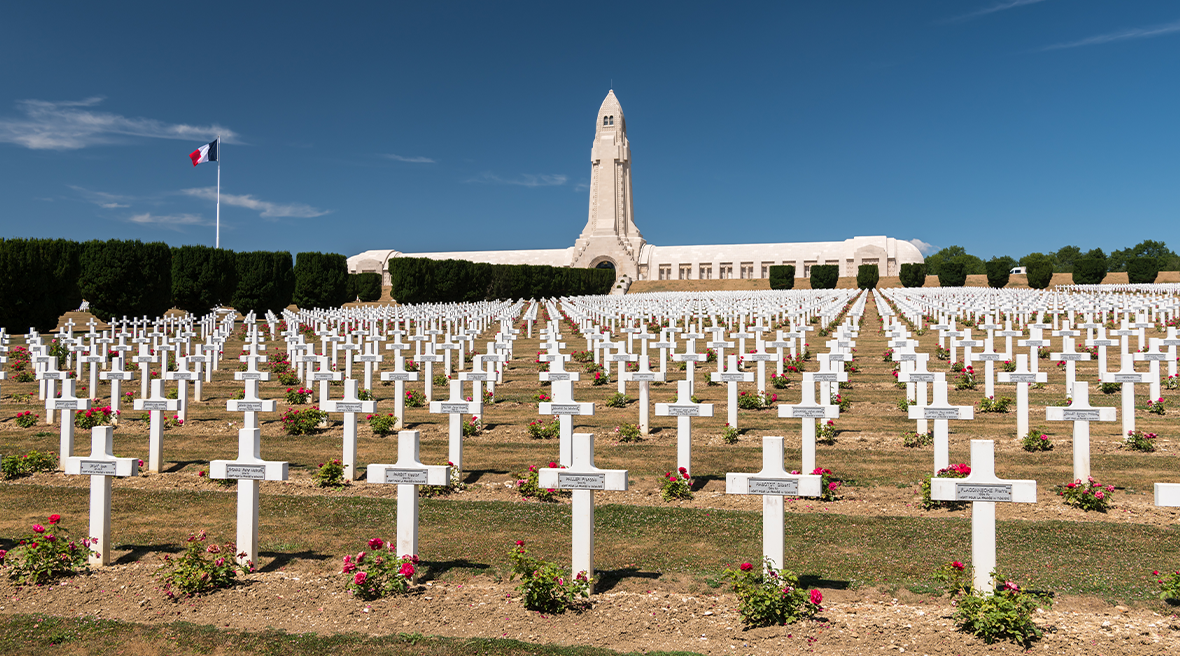
The cemetery outside of the Douaumont Ossuary near Verdun France
The Battle of Verdun
The Battle of Verdun saw 300 days and 300 nights of continuous fighting between France and Germany and may have claimed as many as one million French and German lives. Devastated after the battles of 1916, this area was named a Zone Rouge which prohibited rebuilding. For this reason, many signs of destruction remain.
Remarkable sites include Verdun Memorial at the heart of the battlefields, Fort Douaumont (atop Hill 388) and the destroyed village of Fleury.
Verdun City is less than a 4-hour drive from Calais, following the A26 and A4.
Verdun Memorial & Museum
Since its construction in the 1970s, the Verdun memorial has become more of an educational centre than a monument or even a traditional museum. Featuring extensive displays of WWI medals, weapons and uniforms, fascinating period films and a wealth of other information on the battle and the war generally, it’s a perfect place to introduce your family to the astonishing true story of the Western Front.
Douaumont Ossuary
Officially inaugurated on 7 August 1932 by French President Albert Lebrun, the Douaumont Ossuary is a memorial containing the remains of both French and German soldiers who died on the Verdun battlefield. The skeletal remains of at least 130,000 unidentified soldiers fill the building’s alcoves and can be seen through small windows. On the inside, plaques bearing names of French soldiers who died cover the walls and ceiling. In front of the monument lies the largest French military cemetery of the First World War with 16,142 graves.
The monument to victory and the children of Verdun
This monument in the town centre was completed and inaugurated in 1929. Its 73 steps lead to a crypt, sheltering registers bearing the names of those soldiers who were awarded the Verdun Medal. At the top of the 30-metre column stands a statue of a medieval armour-clad warrior, gazing out to the east and hands resting on a sword.
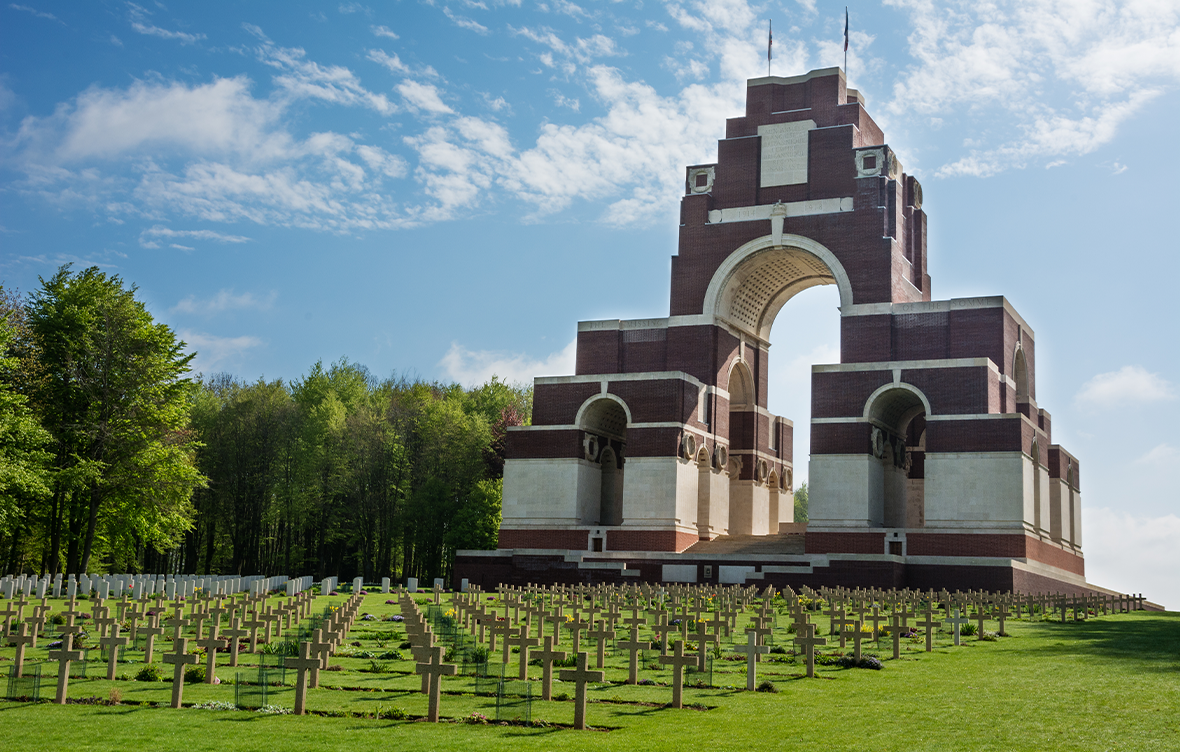
The Thiepval Memorial to the Missing, honouring the thousands of men who died in the Battle of Somme
The Somme
The Battle of the Somme was one of the First World War's bloodiest battles. British and French armies fought the Germans for control on both sides of the Somme River, making the Somme Battlefields in France a key historical spot.
In 1916 the British and French army began an offensive on the German Empire. With a strategy of mass bombardment, the UK commander, Douglas Haig, believed that his troops would simply be able to walk over no man's land and take the German trenches. He was wrong.
The first day saw the British Army suffer catastrophic casualties and remains one of the worst in military history, with roughly 20,000 men killed and an additional 35,000 wounded.
The memorial for the Battle of Somme is only an hour and a half from the Calais terminal, and an easy drive along the A26.
The Thiepval Memorial
It was once believed that the war-torn villages of the First World War would never recover, but in the most part they were rebuilt. One exception is Thiepval, which now houses the Thiepval Memorial to the Missing, to honour the thousands of British and South African men who died in the Battle of Somme (1916). Thiepval is approximately 32 km northeast of Amiens, one of France’s hidden gems.
Tank Memorial at Pozières
In 1919 the Tank Corps applied for permission to put up a memorial using a design of a granite obelisk on a plinth with four models of tanks. Two bronze plaques on the memorial are inscribed with the battles on the Western Front in France in which the tanks participated in from September 1916 to the Armistice in November 1918.
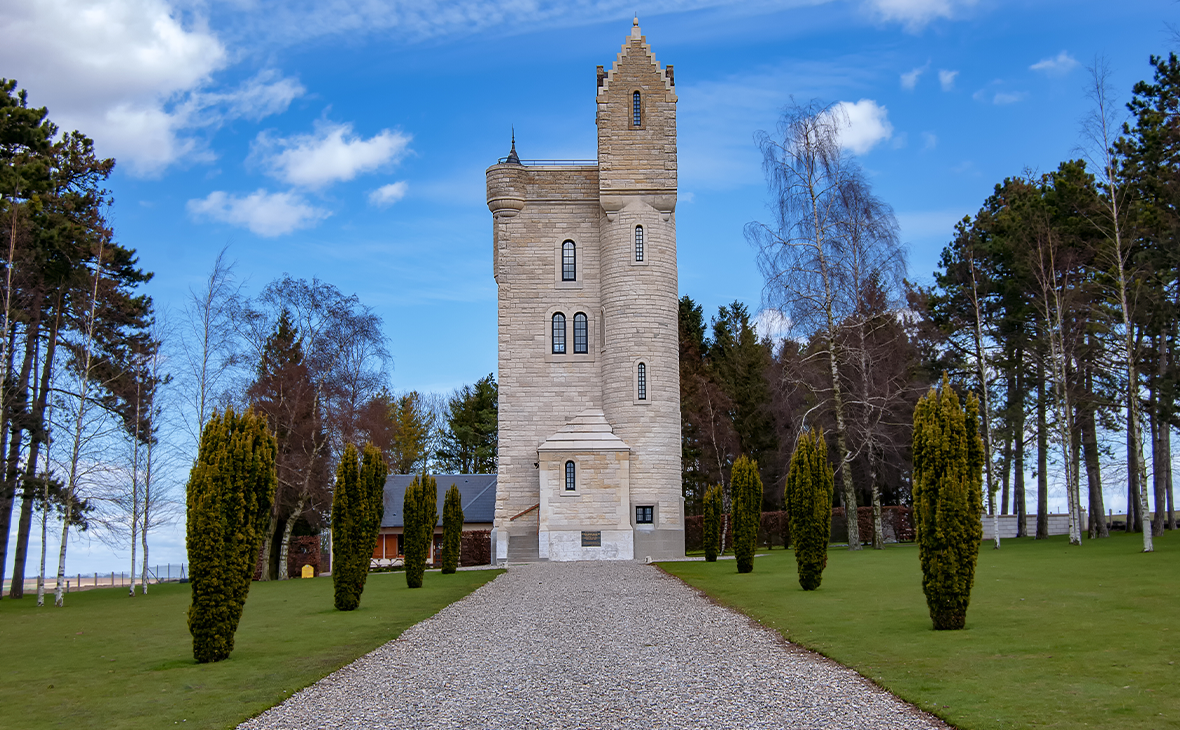
The Ulster Memorial Tower, one of the first to be erected on the Western Front
The Ulster Tower
The Ulster Tower in Thiepval is Northern Ireland's national war memorial and one of the first to be erected on the Western Front. It commemorates the men of the 36th (Ulster) Division and all those from Ulster who served in the First World War. Officially opened on 19 November 1921, it’s a very close copy of Helen's Tower which stands in the grounds of the Clandeboye Estate, near Bangor, County Down, Northern Ireland. This is because many of the men of the Ulster Division trained there before moving to England, then France in 1916.
The Lochnagar Crater at Ovillers-la-Boisselle
One of the largest non-nuclear explosions of all time, the detonation of the Lochnagar Mine signalled the beginning of the Battle of the Somme and, as a by-product, created the largest wartime crater in the world. At some 91-metre across by 21-metre deep, the Lochnagar crater is now a striking memorial to the devastating battle that ranged around it in 1916.
A remembrance ceremony is held each year on 1st July, but it’s well worth a visit whenever you travel. And, thanks to the recent introduction of a sturdy walkway, it’s now perfectly safe in wet weather.
Newfoundland Memorial Park
Newfoundland Memorial Park, near Beaumont Hamel, is a rare example of ground undisturbed since the end of WWI. It’s also one of the largest areas on the Western Front where shell-holes and the trenches can still be clearly seen and even walked along.
There is a great deal to see here, including memorials and cemeteries as well as the preserved trench lines. The visitor’s centre has plenty of guides, plus a small shop and toilets.
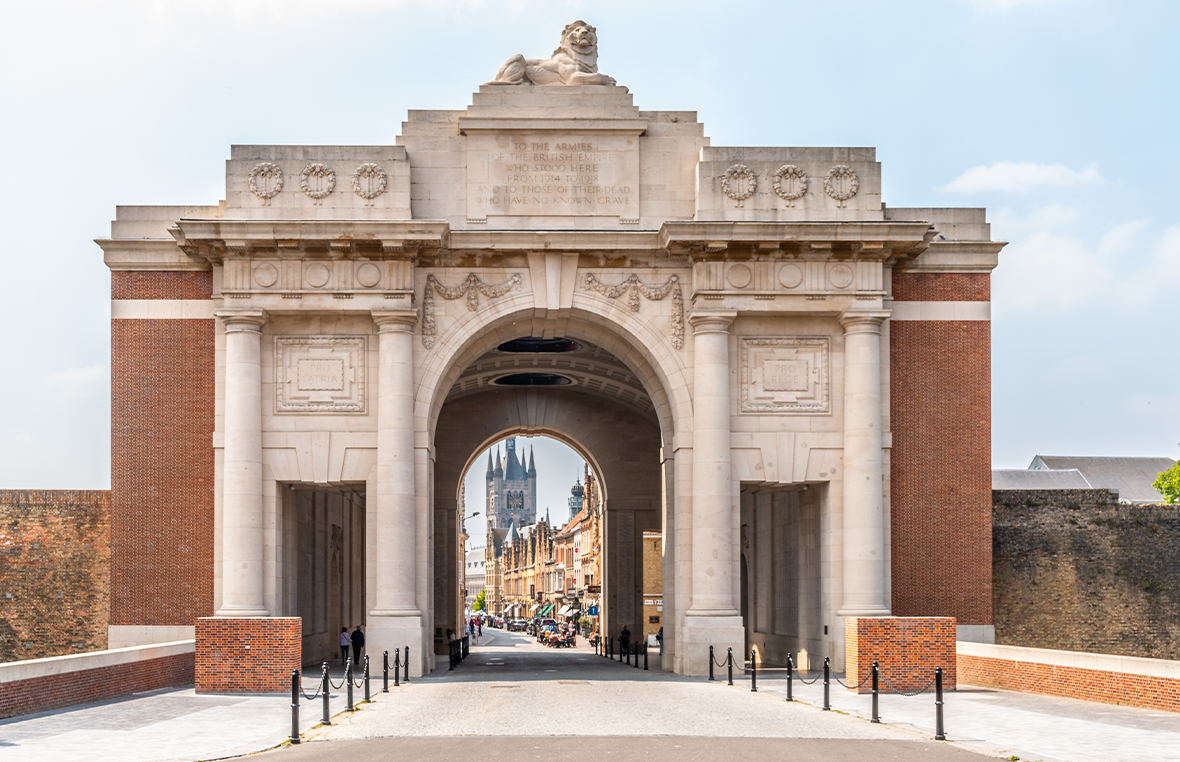
The impressive and poignant Menin Gate where the names of soldiers without graves are listed
The Ypres Salient, Belgium
After an aggressive German advance on the allied forces in 1914, the two opposing armies tried to outflank each other as they headed northwards, in what became known as the "Race to the Sea". This race ended in October 1914 at Ypres, Belgium, though fighting continued for control of the city. Ypres was an important barrier between the German forces and the nearby channel ports, seeing further battles. The second battle of Ypres between April and May 1915 saw great loss of life on both sides, with a total of 95,000 casualties.
The battle at Ypres took place both in the surrounding countryside and within the city centre. The city was bombed continuously for large parts of the war and most of Ypres needed to be rebuilt. The extent of the attacks was so severe that it wasn't until the 1960s that monuments, such as the Cloth Hall, were back to their original best.
Ypres Salient is just over an hours' drive from LeShuttle's Calais terminal with popular stops that include Poperinge along the way. Follow the A16 towards Dunkirk and cross the border into Belgium. Continue onto the E40, before joining the N8 towards the Menin Gate Memorial to the Missing in Ypres.
Hill 62 Trench Museum
Located within Sanctuary Wood, Hill 62 Trench Museum is where some of the original trenches from 1914-18 still lie. The museum also has a collection of WWI images and paraphernalia from French, German and Belgium sources. Be warned, some of the stereoviews (3D images viewed through two lenses) can be disturbing.
The dilapidated trenches evoke clear images of times past. During the first battle, the wood became a place of sanctuary for those who were separated from their regiment, hence the name. But by 1915, the lower slopes of Hill 62 were part of the front line and fighting moved into the area.
In Flanders Fields Museum
This dramatic period of history is captured at the In Flanders Fields Museum, Ypres. Head to the Cloth Hall where you'll come face-to-face with lifelike characters and interactive installations that illustrate the full scale of the tragedy. The authentic objects and images help preserve the link with the past, for those who want to remember and think about war and peace today, and you'll also have the chance to visit the bell tower.
The Menin Gate
One of the most poignant memorials to the fallen is the colossal Menin Gate, which lists the names of 54,000 soldiers of the Commonwealth who have no known grave. Each evening at 8pm, the local fire brigade halts traffic through the gate to perform the Last Post, a tradition that, apart from during the German occupation in WWII, has continued without exception since 1928.
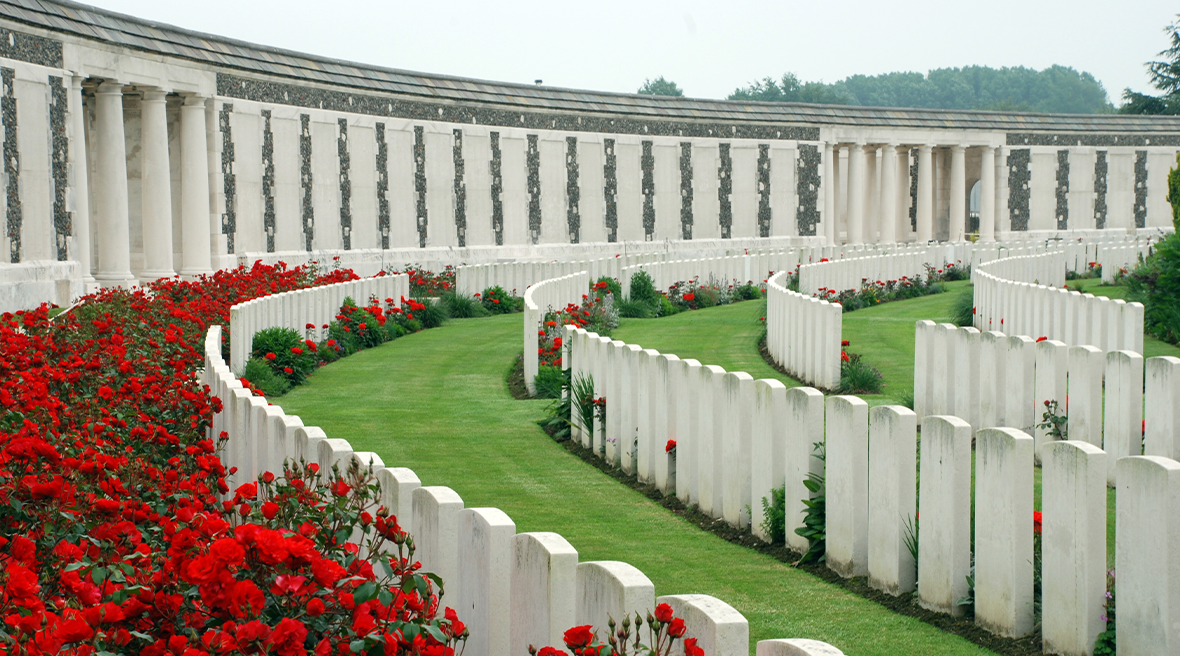
Tyne Cot Cemetery, the largest cemetery for Commonwealth forces in the world, for any war
Tyne Cot Cemetery & Visitors Centre
When visiting the city, known to the thousands of British soldiers who marched through it as ‘Wipers’, it's important to remember that landmarks are split between the town centre and the surrounding countryside. These include the Tyne Cot Cemetery, the largest cemetery for Commonwealth forces in the world, for any war. The cemetery and its surrounding memorial are named after a similarity between the many German concrete pill boxes on this site and typical Tyneside workers' cottages was noticed. It lies on a rise in the landscape, overlooking the surrounding countryside.
Memorial Museum Passchendaele
Devoted to the 1917 Battle of Passchendaele (also known as the Third Battle of Ypres), this memorial marks where over 100 days, almost 500,000 men were killed for only 8km gain of ground. The museum is housed in the historic château grounds of Zonnebeke and takes you into the mind of a soldier as, despite being in a beautiful setting, it’s in a reconstructed dug-out, giving you a feeling of being in the trenches.
Start your journey to the battlefields with LeShuttle
Most of the key battles of the First World War were fought in north-eastern France and Belgium, so there’s no better way to get to the battlefields than with LeShuttle. Calais was an important supply point for the British army fighting just a few miles away, and it’s still an ideal base for exploring the Western Front.
Crossing from England to Calais takes just 35 minutes with LeShuttle, so anything from a day trip to a serious walking tour is easy to enjoy; you can follow the coast east to Dunkirk and the Belgian border, head down the E17 towards Reims or go anywhere in between.